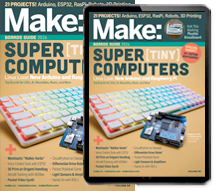COEX 3D
Pumpkin Orange PETG
PETG (PolyEthylene Terephthalate plus Glycol) is a co-polyester used in 3D printing for its durability, impact resistance, and temperature resistance. PETG is the second most popular 3D printing filament behind the ubiquitous PLA. It has qualities comparable to ABS but can be printed without an enclosure or fume handling requirements. Unlike ABS, however, PETG cannot be vapor smoothed using acetone.
Coex 3D Pumpkin Orange PETG is made with Virgin resin and high-quality colorant only, with no fillers. All of Coex's filament is made in our production facility located in Wisconsin, USA. Coex 3D uses industrial-grade extruders and laser measuring quality control to ensure quality, consistency, and a 1.75±0.03mm diameter specification with every spool. We provide filament that gives excellent-looking and strong prints.
Recommended Print Settings
Coex 3D recommends the following settings when printing with our PETG. Settings will vary depending on your specific print setup.
- Hotend Temperature: 230 °C - 245 °C
- Bed Temperature: 70 °C - 90 °C
- Heated Bed Recommended
- Recommended Build Surfaces/Adhesives:
- PEI Build Surface
- Glass Build Surface
- Magigoo
- Glue Stick
- Painter's Tape
- Cooling Fan: Recommended. PETG works best with slightly less cooling than PLA. 50-75% fan speed is recommended.
- IMPORTANT NOTE! PETG can fuse to glass and PEI print surfaces, causing damage to the print bed when the part is removed. For that reason, Coex 3D recommends always using an additional adhesion agent (such as glue stick or Magigoo) which will help the finished part to release from the print bed.
Other Printing Tips
- PETG is slightly more hygroscopic than PLA, so drying your filament can be necessary if it is exposed to humidity. Coex 3D recommends drying our PETG at 65 °C for at least 3 hours. You can tell when your filament needs drying if you experience under-extrusion/inconsistent extrusion, and/or excess stringing. Hearing a "popping" sound during a print is another sign of filament that needs to be dried.
- PETG can often result in more stringing than would be expected with PLA or similar filaments. There are a few steps you can take to reduce stringing:
- Reduce print temperature. Keep in mind that reducing print temperature will slightly decrease layer adhesion and part strength, but can help reduce stringing.
- Increase retraction. Increasing retraction length can help reduce stringing, especially on Bowden-style extrusion configurations.
- Enable "Wipe while Retracting" in your slicer. Most slicers allow for this option, which will start a travel move just before/during the filament retraction. This helps "wipe off" the nozzle as a travel move starts, reducing stringing.
- Enable "Combing Mode" (Cura) or "Avoid Crossing Perimeters" (PrusaSlicer/SuperSlicer/etc.). Rather than travel moves always going in a straight line, this will cause them to choose a path that avoids crossing over perimeters, effectively keeping the nozzle "inside" the print area wherever possible. This eliminates stringing right at the source but still cannot eliminate it all (such as between multiple parts).
- Unfortunately in many cases stringing is impossible to fully eliminate, so some post-processing of prints is often necessary.


